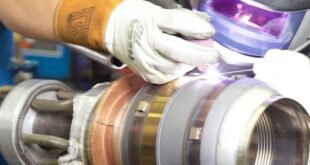Welding Techniques for Super Alloys: Mastering the Craft Introduction Welding Techniques for Super Alloys have become indispensable in today’s engineering landscape. These advanced materials exhibit exceptional strength, corrosion resistance, and heat tolerance, making them ideal for aerospace, automotive, and industrial applications. To harness their full potential, mastering the art of …
Read More »Underwater Welding Procedure, Working and Safety
Underwater Welding Procedure, Working and Safety Introduction Underwater welding, also known as subaqueous welding, is a specialized field that involves the use of welding techniques to join metal structures below the surface of the water. The process is used in a variety of industries such as shipbuilding and repair, offshore …
Read More »Welding Non-Ferrous Metals
Welding Non-Ferrous Metals: Techniques, Applications, and Challenges Introduction Welding is a critical manufacturing process that joins materials together to create strong and durable structures. While welding is often associated with ferrous metals like steel and iron, it is equally essential for non-ferrous metals, such as aluminum, copper, and titanium. Non-ferrous …
Read More »Welding Techniques for Carbon Steel
Welding Techniques for Carbon Steel: Mastering the Art Carbon steel is one of the most widely used materials in various industries due to its exceptional strength, durability, and versatility. It consists primarily of iron and carbon, with other alloying elements added in small quantities to enhance specific properties. From structural …
Read More »Welding the Exotic Metals
Welding the Exotic Metals: A Comprehensive Guide Introduction Welding is a remarkable craft that has been essential in various industries, from construction to aerospace. While welding itself is an intricate skill, welding exotic metals takes it to a whole new level. In this comprehensive guide, we will delve into the …
Read More »Welding in Aerospace Fabrication
Welding in Aerospace Fabrication: Crafting the Sky Introduction At its core, welding in aerospace fabrication involves the art and science of joining metallic components within the aerospace industry. This process is accomplished by applying heat, pressure, or a combination of both to create a strong, permanent bond between materials. The …
Read More »Welding Galvanized Steel
Welding Galvanized Steel: Techniques, Safety, and Best Practices Introduction Welding Galvanized Steel, a process that joins two pieces of steel together, plays a crucial role in various industries, including construction, automotive, and manufacturing. Galvanized steel is coated with a layer of zinc to protect it from corrosion, making it an …
Read More »Structural Steelwork Welding
Structural Steelwork Welding: Building Strong Foundations Structural steelwork welding is a vital process in modern construction, ensuring the durability and integrity of buildings, bridges, and various infrastructures. In this article, we’ll delve into the world of structural steelwork welding, exploring its significance, techniques, challenges, and benefits. Let’s embark on a …
Read More »Welding Techniques for Lead
Welding Techniques for Lead: A Comprehensive Guide Lead is a heavy and soft metal that finds its use in various industries, including battery manufacturing, radiation shielding, and plumbing. Lead welding is a crucial skill in various industries, from construction to plumbing. Whether you’re a seasoned welder or just starting, understanding …
Read More »Welding of Dissimilar Metals Challenges and Solutions
Welding of Dissimilar Metals Challenges and Solutions When it comes to welding, the process of joining two or more metal pieces together, working with similar metals is relatively straightforward. However, the real challenge arises when you have to weld dissimilar metals. Dissimilar metal welding involves joining two or more metals …
Read More » Welding of Welders All about Welding and Welders
Welding of Welders All about Welding and Welders









